Hello, I’m Beth! I’m a full time creator based in the Cairngorms in love with Scotland and Scottish history. Subscribers receive weekly newsletters about Scotland’s history and folklore, and a little about my life living and adventuring in this country. If you’d like to support my work as a writer, you can become a paid subscriber.
Interested? Click subscribe…
Happy April, friends!
There has been an energy shift in recent weeks. The days are longer (I’m writing this in my garden at 7:35PM and the sun still hasn’t set!) and those dreadfully long winter nights which dominated everyday life suddenly seem very far away. The tulips in my rosebeds which I have been anxiously waiting for have finally bloomed in yellows and deep purples, and green life is bursting out all over the plants around me. Over these past few weeks, the hedgerows and trees in my garden have been a cacophony of chatter between various species of birds: blackbirds, an assortment of finches, robins, house sparrows and starlings.
Nature has taken a deep breath and exhaled, and with it some life has been breathed back into me.
There’s an old saying that you’re not a true local in the Scottish Highlands until you’ve made it through three winters—one down, two to go! I love winter, and have especially loved this first winter living in northern Scotland, but it has also been tough. I really felt the impact of the longer nights on my mental health, which placed something of a restriction on my creativity. But Spring has now come, and I’m already feeling its benefits.
March Recap
At the end of each month, I share highlights on Instagram. I find this is a really nice way to keep a sort of digital diary of what my month was like, and decided that I’d like to start doing something similar here on Substack too. So here it is—my first monthly recap as a writer living in the Cairngorms.
March was a busy month with a few different important moments for me. Most important of all, I am so happy to finally be in the final stages of editing with my publisher for my upcoming book, Women in the Scottish Wars of Independence. This has felt like such a long journey but it now feels like we are getting somewhere, and that my dreams of publishing this book will become a reality this year. I don’t have any more details about the book yet, but you can be sure that you, my lovely subscribers, will be the first to know as soon as it is available for preorder. I’m so excited!
March also brought starting at my new part time job at a local museum here in the Cairngorms, and more training for the West Highland Way, which I’ll be walking with my lovely friend Gabby later this year. If anyone reading this has completed the West Highland Way and has any hiking or training tips, please leave me a comment!
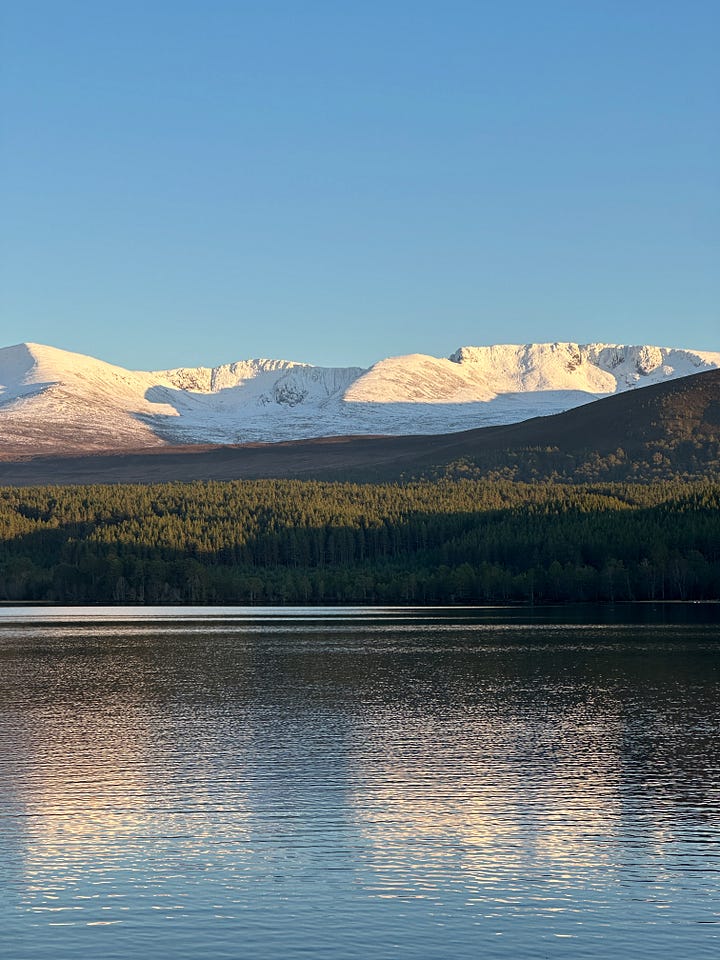


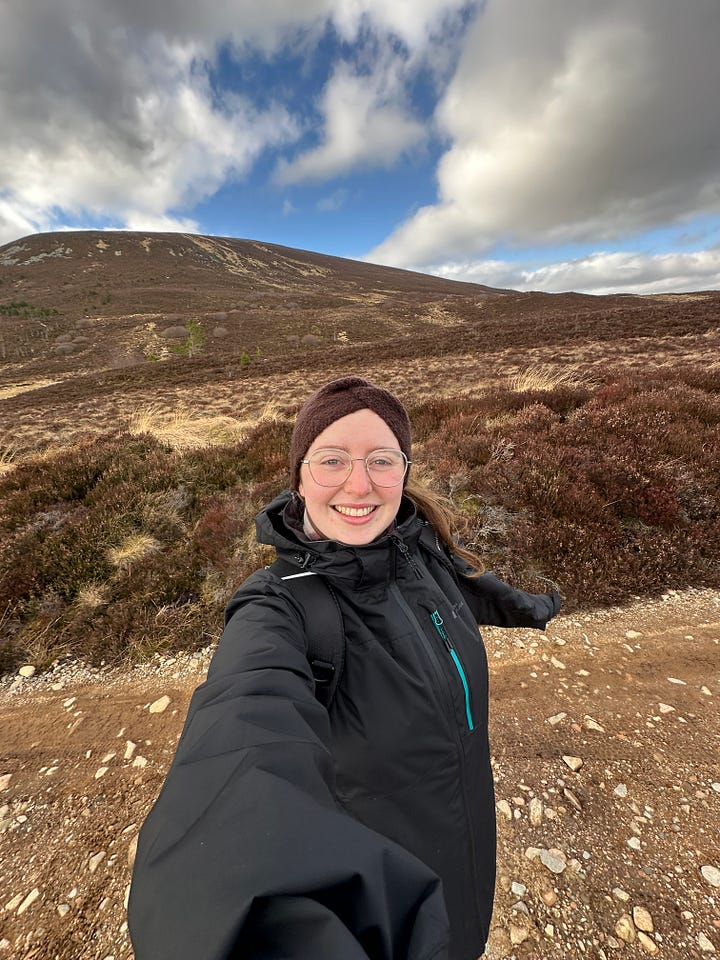
Dunkeld
Now for a recap from March of what you’re probably here for: Scottish history! I had a wee day trip to Dunkeld, a beautiful historic village in Perthshire that is probably one of my favourite places in Scotland with some lovely memories. While I was there to meet some friends for lunch, I made sure to visit the haunting, partially-ruined Dunkeld Cathedral to say hello to someone who feels like an old friend from Scottish history: The Wolf of Badenoch.
Now, I know what you’re thinking. Alexander Stewart, The Wolf of Badenoch—isn’t that the guy who burned down Elgin Cathedral in 1390 and generally has a reputation as the vilest man in Scottish history? Yes, you’re correct. However, I spent some time a couple of years ago researching Alexander’s life and have come to the pretty firm conclusion that he has got to be one of the most vilified people in Scotland’s history, without behaving that much differently to his contemporaries. He was dubbed his ghoulish moniker as the Wolf of Badenoch some 40 years after his death, while in his lifetime he was known as ‘Great Alexander, the King’s Son’.
I’m not saying he was a saint, but I would hint to that old phrase of the victors being the ones who write history. Ultimately, Alexander was no victor, and despite the sins of his fellow 14th-century magnates (looking at you, Robert Stewart) he has become something of a pantomime villain. I think there is much more to him than that.
Regardless of whether you agree with me or not, we can see eye-to-eye on one thing. He has the most incredibly detailed and beautiful tomb in Scotland. You can visit it at Dunkeld Cathedral and admire the intricate details and physical legacy of one of the most powerful individuals from 14th-century Scotland. Just don’t pay too much attention to the sign they plonk on his effigy.



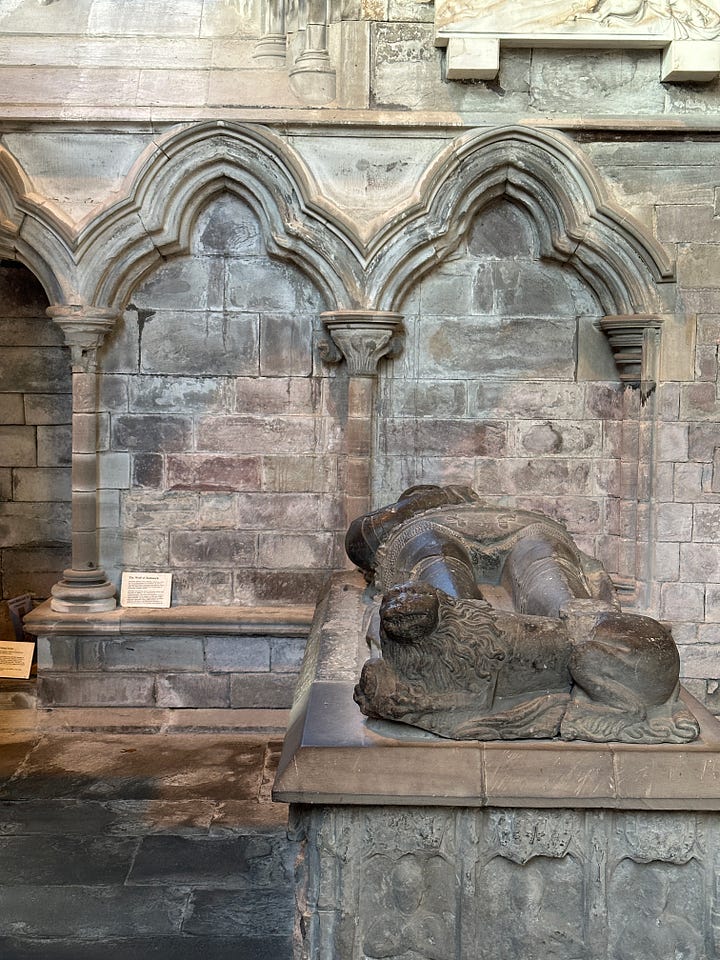
St John’s Kirk
In March, some voluntary work that I do with the National Churches Trust brought me to St John’s Kirk in Perth. Although most of the structure that you see today dates from the 15th century, this church was founded in 1126 and as such will be celebrating its 900th anniversary next year. The church was also the scene of John Knox’s fiery sermon in 1559 that kickstarted the Scottish Reformation, with members of the congregation so inspired by his speech against idolatry that they chose to stone a priest and strip St John’s and other churches in Perth of their Catholic symbols. Hmm.
During my visit, I had the rare opportunity of climbing St John’s central tower. Climbing up a narrow spiral staircase, I was taken back through the centuries with each timbered floor and beam that I found myself clambering around to explore. Some of these beams are absolutely huge, standing sentinel and holding the tower together. While we aren’t exactly sure where the timber came from, it may have been imported from the Baltics or perhaps floated down the River Tay from a forest further north in Scotland. You can see names scrawled onto the timber frame of the tower, relics of those who constructed the tower and cared for its upkeep over the centuries.

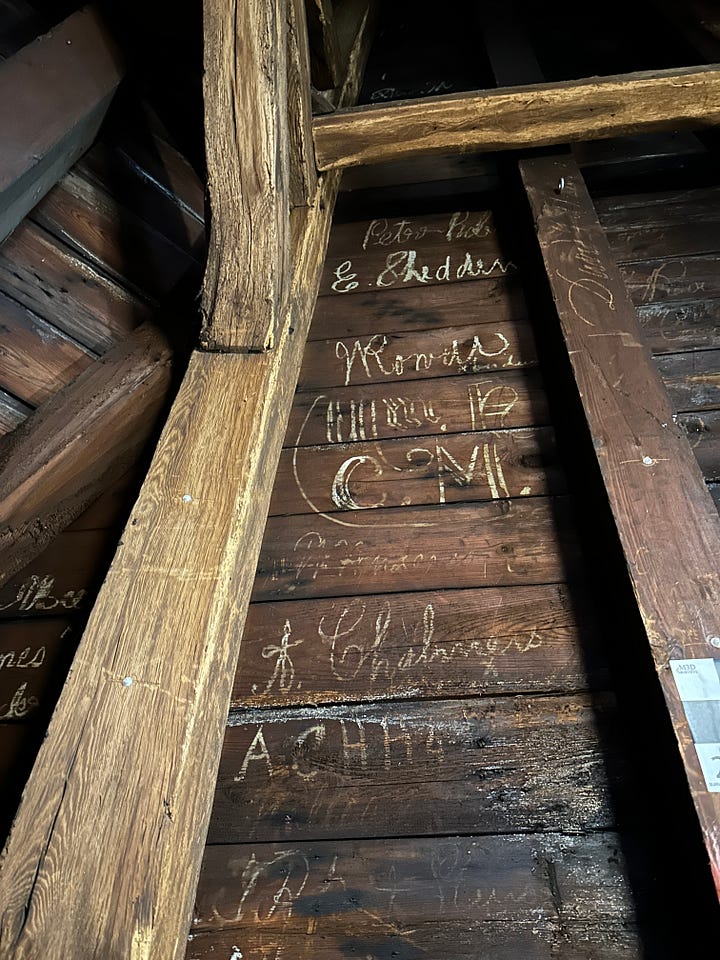

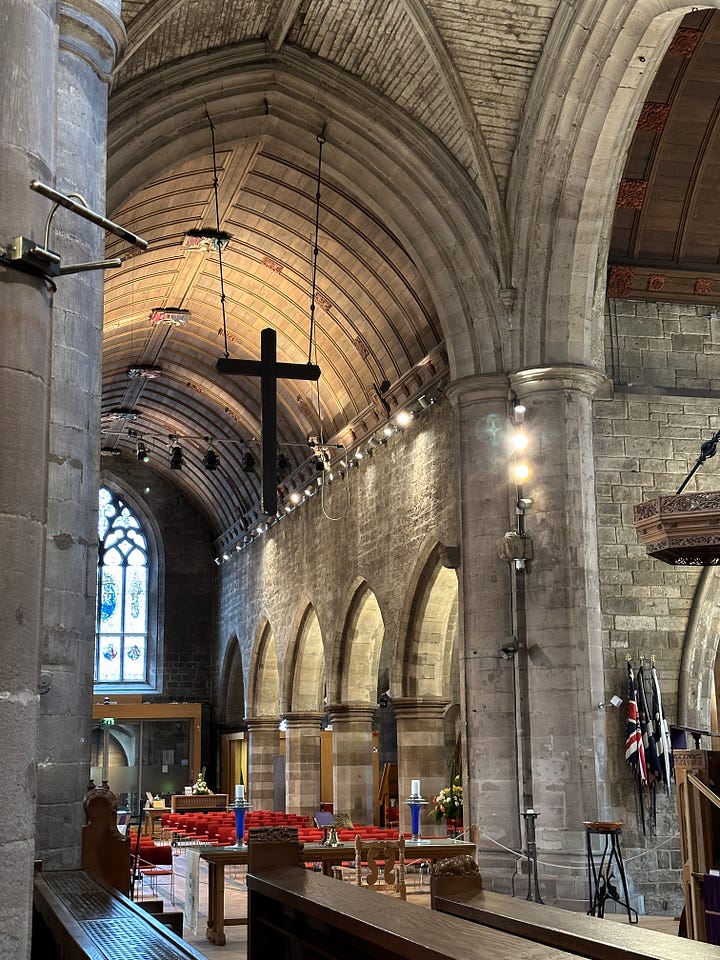
Barra
Earlier in March I had an absolutely wonderful experience visiting Barra with a group of friends. Barra is an island in the Outer Hebrides; the second southern-most inhabited one to be precise. This was my first time visiting the Outer Hebrides, something that has been on my bucket list for as long as I can remember.
Another bucket list moment that I ticked off on this trip was taking Loganair’s tiny plane from Glasgow Airport to land on the white sandy beach at Barra Airport. This is an incredibly unique beach, as it is the only one in the world used as a landing strip for scheduled flights! While the flight itself did feel like rattling around in the back of a flying transit van, landing on the beach was an amazing experience and the colours of the water as we came into land were just stunning.
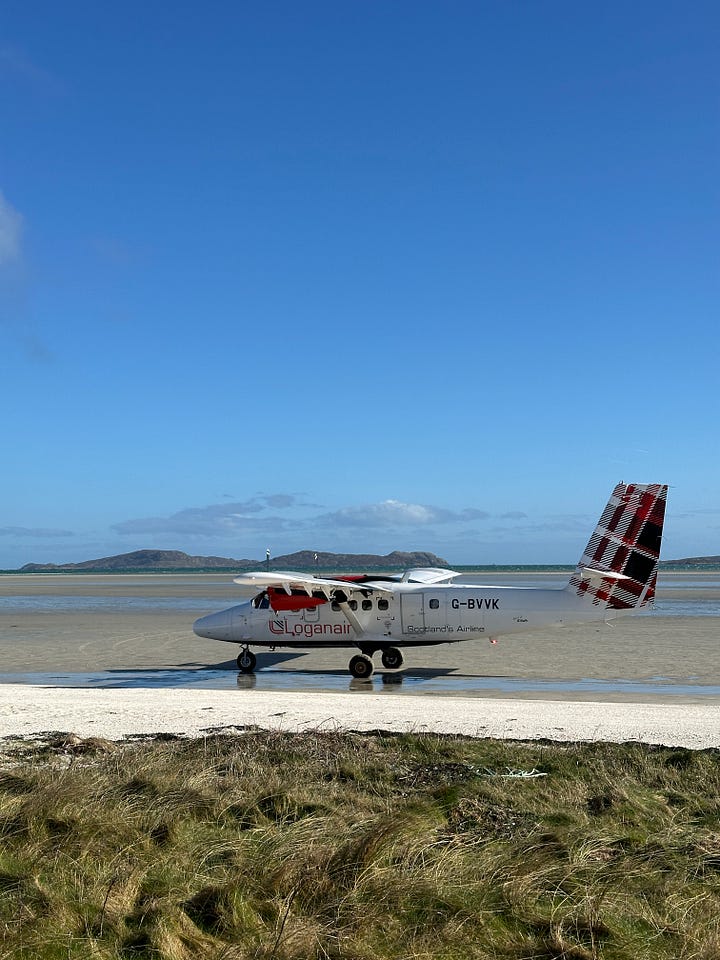
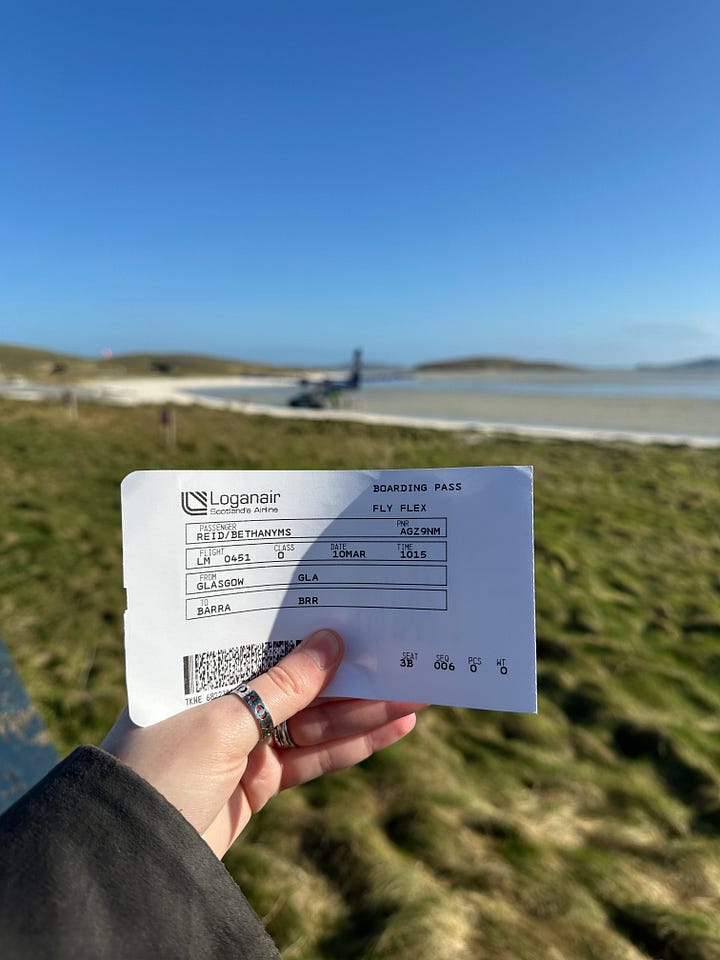
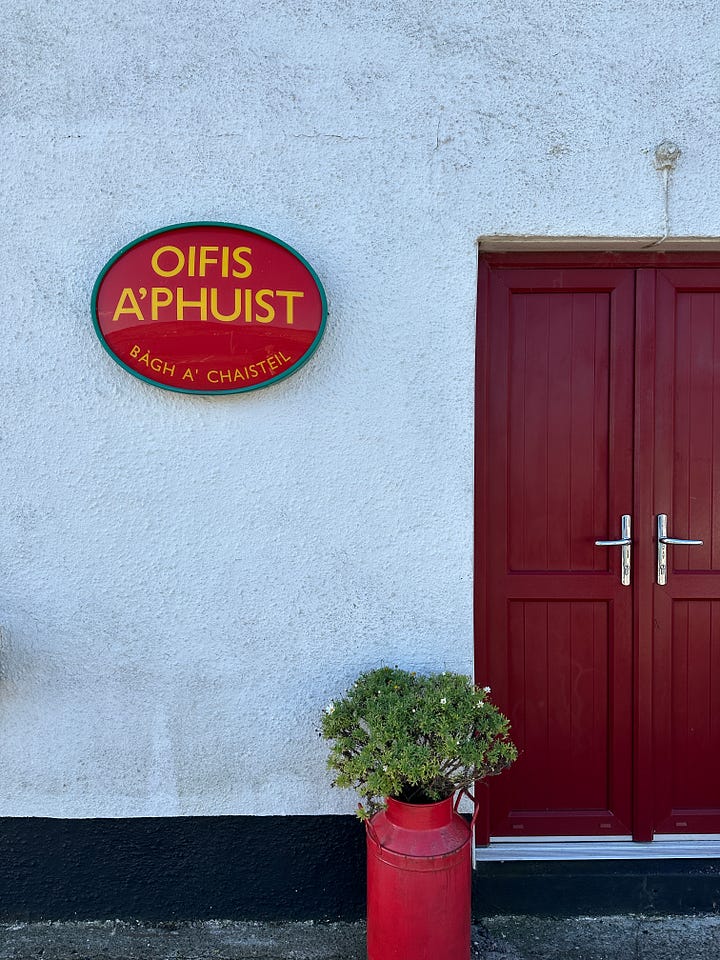
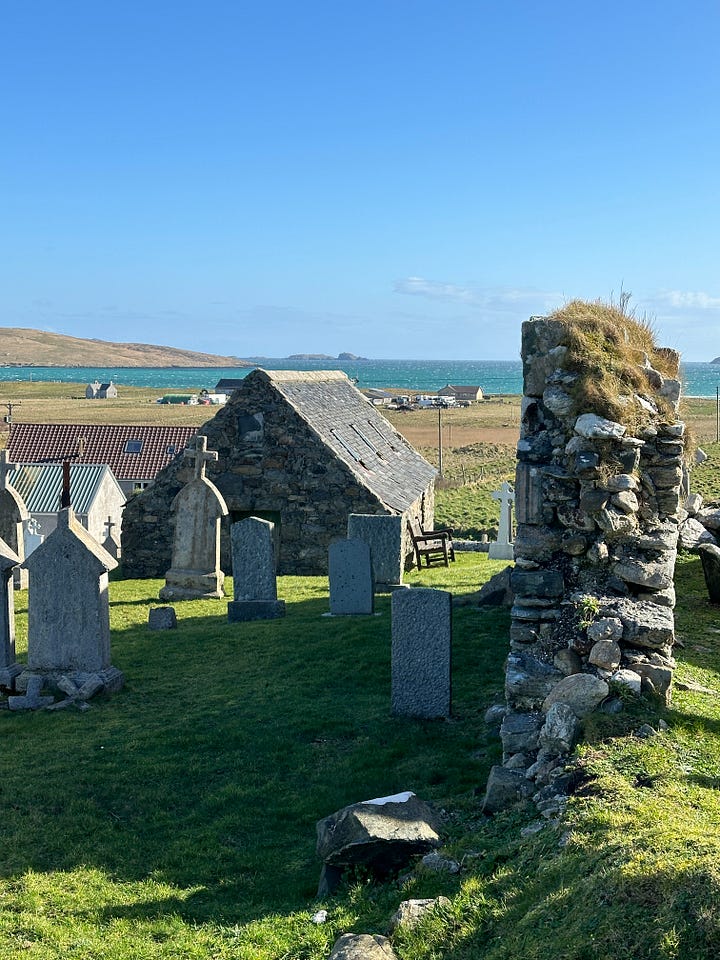
We only had two days for this trip, so we spent it exploring Barra’s medieval chapel, Cille Bharra, and enjoying plenty of good seafood and Barra gin. We also took a quick visit across to Vatersay, an island connected to Barra by a road causeway. The beaches on Vatersay are some of the most beautiful that I have ever seen, and honestly could have been Caribbean were it not for the freezing wind and water!
Overall, this was just the most fantastic trip and I’m already counting down the days before I go back. I’d love to spend a good couple of weeks fully exploring the rest of the Outer Hebrides. Hopefully that can be a trip I take in 2026…
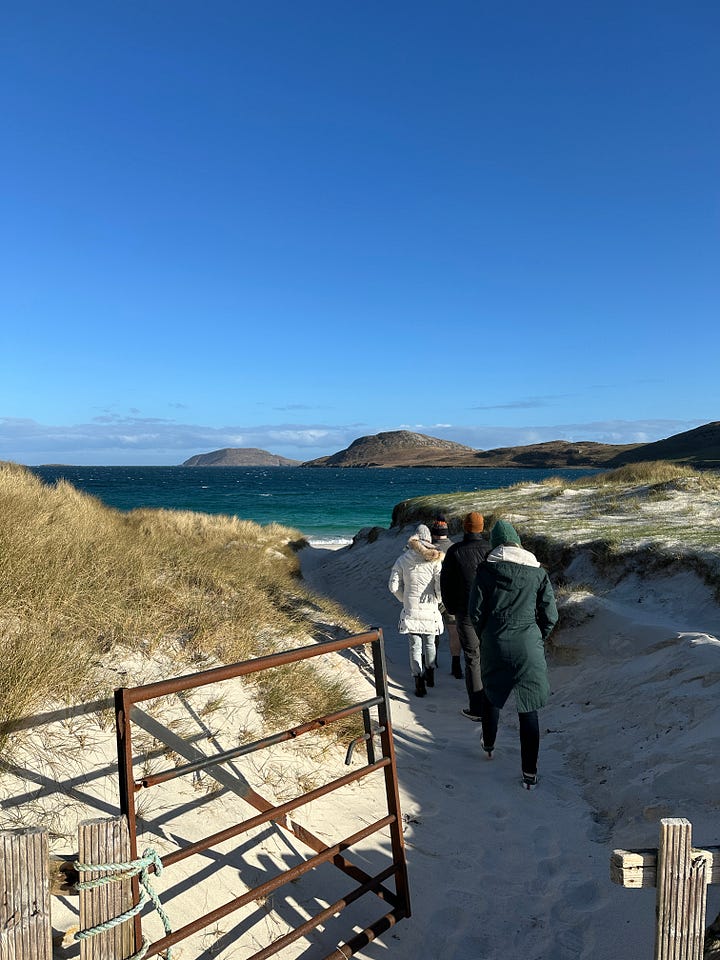

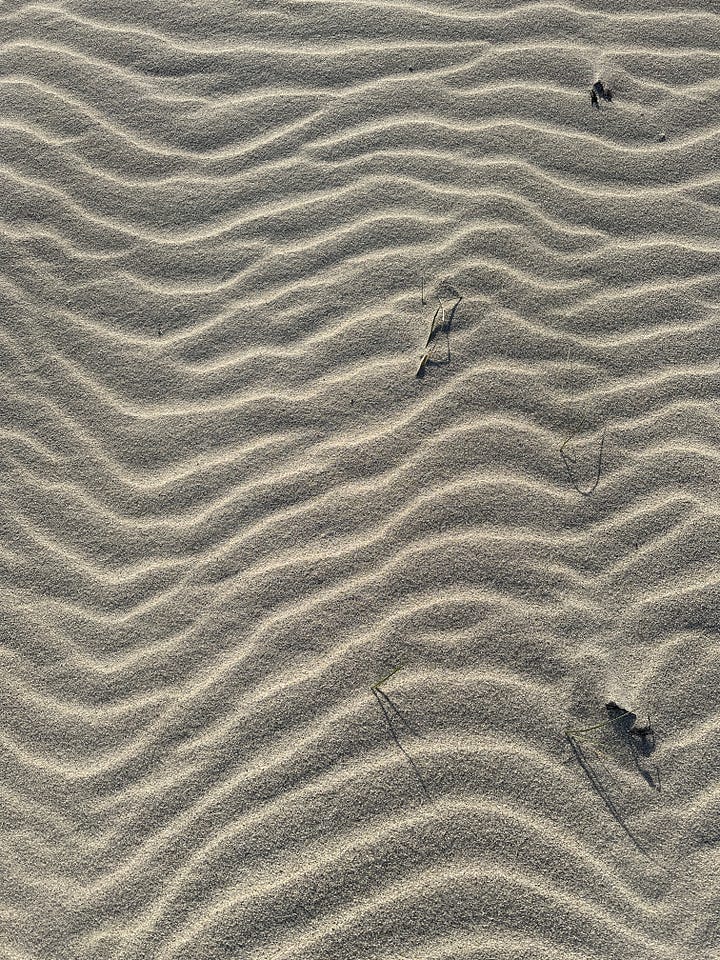
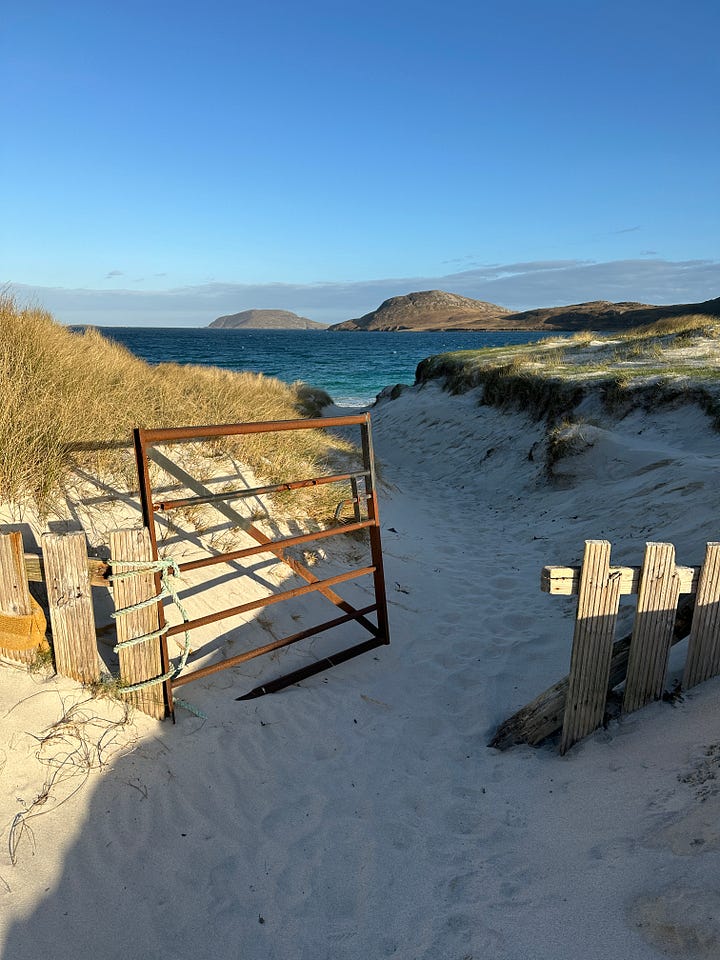
Thank You!
I hope you enjoyed my March recap. Let me know if you like this format and I’ll keep doing it as we progress through the year. I think its a really fun way of almost journalling what each month brings along. Maybe you could try it too, whether on Substack or in a notebook at home!
Until next time,
Beth xx
If you’d like to read more, why not try these out?





Stunning photos! Thank you for sharing your month with us. Love following your adventures!
What an amazing month, loved the format and can't wait to read more of your amazing writing!